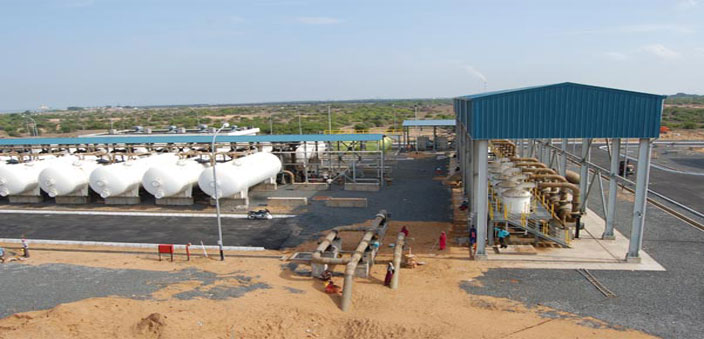Our Prime Minister (PM) Narendra Modi, while recently dedicating the water of Narmada Dam in an important link at Botad, Saurashtra, gave a clarion call emphasising that “Water is the most important resource for economic growth of the country”. Other recent headlines such as “India water stressed, can sustain only one more drought” and “The rain gods have failed Tamil Nadu, and farmers are the first causalities as crop losses push them to the brink of despair”, are indicative of the huge problems of the water woes being faced by the country, and which will continue to impact our future in spite of India having two important and most vital major resources – the long, maritime coastline, and abundant, free solar energy.
It is now critical that governments (both Central and States abutting the coast line), Municipal Corporations, Farmers Co-operatives, Industries, NABARD, and others take a serious view and develop a road map, both short-term and long-term, with some innovative approach for using the free solar energy to treat the large body of sea water available all along our coast line to augment substantially our scarce water resources, and that too at the lowest cost.
Desalination plants, the only solution
The central and various state governments have encouraged, apart from building storage dams, the installation of check dams, water harvesting, micro and sprinkler irrigation for farms and taken other measures as part of their water conservation and management policy, but this has not helped to stop substantial depletion of ground water resources of the country on which a majority of the population of about 68 crore (56% or so) is dependent, since population receiving piped water is only about 48 crore (40% or so). Almost 50% of the 320 out of 640 districts in the country are affected by ground water contamination.
Further, it is expected according to the government statistics, that per capita availability of water will come down from the current 1545 cubic meter to 1,340 cubic meter by 2025, and 1,140 cubic meter by 2050, a very serious situation when 1,700 cubic meter per capita availability is the border line for stressed water condition.
These are ominous signs and it is very important that the country must plan on a war footing to solve the immense problem of scarcity of water which could impede the economic growth as well as the increased misery of population (also farmers) as currently evident in southern districts of Tamil Nadu, where the situation is absolutely dismal. Fortunately, India with its long coastline is very well placed to tackle the situation on water woes with the below options:
Specific energy consumption of less than 1.5 KWH/ 1000 liters has been reported for seawater using AD technology, which is one of the lowest so far achieved by any desalination technology, and the big plus is that it has immense synergy with the German concentrated solar technology generating, concurrently both PV power and thermal heat, which are the two most important green energy inputs for the AD technology, again being produced at the lowest cost.
An overview of water shortfall by 2025
Assuming 1,700 cubic meter per capita water availability is a stressed condition and based on prediction of 1341 cubic meter availability by 2025, the shortfall for our country will be say 350 cubic meter per capita by that year, but based on the current per capita availability of 1545 cubic meter, the shortfall will be say 200 cubic meter per capita.
Assuming that we try to make up even to the per capita figure of current availability of 1545 cubic meter, we shall have to plan to set up an additional annual water capacity of 1.3 billion x 200 cubic meter=260 billion cubic meter, which works out to say 700 million cubic meter on a daily basis, i.e., almost 200 times of the current supply of Mumbai city which receives 3.5 billion litres of water per day.
A new water paradigm of reduce, reuse and recycle
By 2030, it is expected that about 65% of the total world demand for water will be for agriculture requirements, while for industries 22%, and the balance 13% for domestic requirements. Apart from producing desalinated water at a competitive cost, a combination of the technologies proposed above can also play a very vital role to treat the waste water, presently going waste, from almost all the sewage plants in cities and towns. The treated water of good quality (which may not be accepted for domestic supply) can be given to agriculture and industrial sectors, so as to help to save the harvested ground water and/or desalinated sea water resource ( near the coast) for domestic use.
The treatment of waste water must be made mandatory by the government and also be classified as an important infrastructure for receiving funding, the cost of such treated water (or even desalinated water) supplied to the farmers could be subsidised like other inputs of fertiliser, seeds being given to them currently while supply of the same to industries could be on pure commercial basis.
Further, to stop the heavy depletion of ground water, for industries involved in manufacturing soft drinks, bottled water, sodas etc., it must be made mandatory for them to use only desalinated water (with necessary addition of minerals) in the various states abutting the coast, and if their plants are located in interiors, they should be relocated near the coast and should be asked to set up such desalination plants to source their water. Railways are also wasting immense water by supplying one litre bottle to passengers in the trains – almost more than half of which goes waste, they should switch over to 300 or 500 millilitres bottles and should be asked to source their water only from such desalination plants except in the northern states.
Setting up small and medium desalination plants
Thus, two major disruptive technologies: 1. Concentrated solar power and thermal generation and 2. Adsorption Desalination (AD) or hybrid one of MEDAD, if put in tandem at any location near the coast, will have the flexibility of not only generating substantial quantity of potable water from sea water, but will immensely add to the overall value chain by supplying the surplus balance PV power (after being used for requirements of the AD or MEDAD systems) with its captive micro DC or AC grid for household and other requirements for lightning, irrigation, pumps, etc., the balance thermal heat of course being available for hot water supply and space cooling.
The capacity of desalination plants with the above combination can be as low as say 5,000 liters/day, to say one million to five million liters/day or even larger of 100 million liters/day. And they can be set up at a reasonable cost with German concentrated solar technology of green power generation (less than `2 per KWH) and a well-designed desalination plant manufactured in India with simplistic dual system using AD (or even MEDAD) technologies. It is expected that the cost of water produced will be about four to five paisa per litre (for plants having a capacity of 1 million litres/day), and it will be about twice this value for small plants of say 5,000 litres/day.
It would be of great interest if the Ministry of Water Resources/ Ministry of Drinking Water & Sanitation and NGOs involved in the field can take up the challenge to set up DEMO plants using the technologies mentioned above either at IIT (Delhi) or IIT (Madras), or even at BARC, Trombay and/or Central Salt Research Centre, Bhavnagar. These are institutions which have been active in promoting desalination technologies in the country for a gainful utilisation of the abundant sea water available on our long coast line, as well as the immense solar direct natural irradiance impinging throughout on our well located tropical land mass.


 [/column]
[/column]